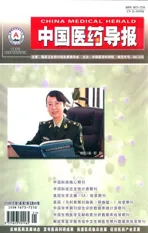种植支持式固定修复体两种固位方式的研究进展
2016-02-17祝洁彭静
祝 洁 彭 静
中国武警总医院口腔科,北京100039
种植支持式固定修复体两种固位方式的研究进展
祝 洁 彭 静
中国武警总医院口腔科,北京100039
种植支持式固定修复体的固位方式主要分为粘接固位与螺丝固位,学者们对于二者的选择一直存有争议,本文从这个问题出发,就其各自在种植修复体加工难易度及成本、修复体被动就位、取戴便利性、咬合负载应力、修复体固位力、美观效果、对周围组织健康的影响、种植体及修复体成功率八个方面,对最新研究进展做一综述,以期为临床应用提供参考。
粘接固位;螺丝固位;种植支持式;固定修复
种植支持式固定义齿的固位方式主要包括粘接固位与螺丝固位,学者们对于二者的选择一直存有争议。本文将从这个问题出发,就其各自临床适用情况及优缺点的最新进展做一综述。
1 修复体加工难易度及成本
由于可利用传统修复技术和条件[1-2],所以粘接固位修复体的制作更简单,但做美学区修复时,常需用螺丝固位式临时修复体塑造个性化穿龈形态,同时借助它可获得软组织的精确复制,边缘更密合[3]。在维护方面,螺丝固位可以用比粘接固位更少的时间[4-5]修理或更换修复体部件。但螺丝固位修复时需要额外的部件,通常在使用成本上会更高一些[6],所以一定要权衡好选择螺丝固位增加的成本和可能破坏粘接式修复体的潜在成本。
2 修复体被动就位
获得被动就位是保证长期种植修复、防止机械并发症的先决条件。这或许是由于达到被动就位修复体不会在植体和骨之间产生不良应力,且能使固位螺丝完全发挥作用而把种植相关部件牢牢结合成一体[7],反之,可能会产生生物性或修复体方面的并发症。
有研究中认为粘接固位比螺丝固位修复体更容易获得被动就位[8-9],而大多数研究报道二者并无统计学差异[10-13]。此外,尽管受固位机制和潜在参数很小的影响,种植固定修复体应力的产生主要在于制作过程的精准度[14],由于加工设备内部固有误差等因素,修复体几乎不可能达到完全的被动就位[15]。
3 修复体取戴便利性
涉及多个种植体的螺丝固位修复体难免在制作中有一定程度形变,通常认为粘接固位补偿了这种误差,不过它不具备取戴上的便利性[16]。有学者为了兼顾二者的优点[17],进行了许多改良固位方式的尝试,取得了不错的效果。
与粘接固位相比,螺丝固位主要优点就是可预期的取戴便利性,这样不必损坏修复体或固位装置。因此,可随时评估种植体和软组织的情况,便于清除牙石、清理种植部件等。所以悬臂式和A11-On-4等全牙弓种植修复体最好使用螺丝固位[18]。
4 修复体咬合负载应力
有学者指出螺丝固位发生技术性并发症和瓷崩裂的情况要比粘接固位高的多[19],在同样咬合负载条件下,咬合面没有螺丝通道孔的粘接固位可建立理想稳定的咬合接触[2,9],修复体抗折裂强度显著比有孔道的要大[20-21]。同时,螺丝孔道充填材料影响了咬合负载的方向,咬合力会被分散成侧方力传递到植体上,而不是直接的轴向力[16]。而无论在轴向和斜向负载下,粘接固位种植支持式义齿呈现了更好的应力程度及分布[23]。
5 修复体固位力
对于粘接固位修复体,基台的特性比如锥度、表面积和高度及粘接剂类型都可影响固位力[24-25]。根据Jorgensen对天然牙提出的理想锥度概念,许多生产商制作的基台最大锥度为6°[26]。冠和基台通常位于龈下2~3 mm,为确保固位力,基台高度至少为5 mm[27]。所以当牙弓间距离受限,如小于4 mm时,建议用螺丝固位。选择粘接剂时,应根据临床患者情况及粘接剂性能[28-29],现有粘接系统均可获得良好效果。有学者做了10~23年的追踪,证实氧化锌粘接剂可提供充足粘接力,且未发生种植体周围炎[30]。
螺丝固位修复体的固位力由螺丝拧紧产生,所以环抱力不足、螺丝未拧到位、生物机械负载过重、非轴向力、基台和修复体就位不良、种植体直径等都会影响固位力大小[31-33]。
6 修复体美观效果
种植修复最终美观效果很大程度上取决于种植体周围软硬组织余量、类型以及植体位置。受牙槽骨解剖条件限制,螺丝固位的孔道可能会暴露在美学区,此时通常使用粘接固位[35],如果要用螺丝固位,为让螺丝孔远离美学区需使用角度或定订基台[7],螺丝至少偏离种植体长轴17°来为固位螺丝留出足够空间。在后牙区,复合树脂等不透明材料的应用一定程度上改善了修复体的美观。
7 对种植体周围组织健康的影响
粘接剂残留是粘接固位一个常见问题,这会造成软组织炎症及植体周围骨吸收[6,37-38]。因此,戴冠后去除多余粘接剂至关重要。而螺丝固位由于存在微间隙,会有液体或细菌的侵入[39]。不仅如此,有学者在部分无牙颌患者中对比了两种固位方式长期修复效果及并发症,也发现在边缘骨吸收和牙龈指数方面,粘接固位要更好一些[40]。但多数学者认为二者均无统计学差异[41-42]。
8 种植体及修复体成功率
许多因素影响着种植体及其修复体的成功,包括患者全身健康状况、种植位点选择、固位方式选择、生物力学因素、咬合负载情况及口腔卫生维护等[43],固位方式选择是一个重要方面,有许多学者通过长期随机对照试验或系统性综述等对比了两种修复体的成功率,多数认为二者并无统计学差异[44-48]。其中,Wittneben等[47]发现,尽管没有统计学数据,但是总体来讲,螺丝固位修复体在技术性或生物性并发症方面略少一些。
9 小结
种植支持式固定修复体的两种不同固位方式各有优缺点,医师常根据临床需要和自己的偏好来选择,本文从不同角度客观叙述了二者最新研究结果,但是对于两种固位方式均可的情况下,其各自在不同方面的长期临床效果及具有压倒性优势的选择,目前仍缺乏足够循证医学的证据,对此仍需要进一步追踪研究。
[1]Micha1akis KX,Hirayama H,Garefis PD.Cement-retained versus screw-retained imp1ant restorations:a critica1 review[J].Int J Ora1 Maxi11ofac Imp1ants,2003,18(5):719-728.
[2]Misch CE.Denta1 Imp1ant Prosthetics[M].St Louis,Mo:Mosby,2005.
[3]Chee W,Jivraj S.Impression techniques for imp1ant dentistry[J].British Denta1 Journa1,2006,201(7):429-432.
[4]U1udag B,Ce1ik G.Fabrication of a cement-and screwretained mu1tiunit imp1ant restoration[J].J Ora1 Imp1anto1,2006,32(5):248-250.
[5]Guichet DL,Caputo AA,Choi H,et a1.Passivity of fit and margina1 opening in screw-orcement-retained imp1ant fixed partia1 denture designs[J].Int J Ora1 Maxi11ofac Im-p1ants,2000,15(1):239-246.
[6]Chee W,Fe1ton DA,Johnson PF,et a1.Cementedversus screw-retained imp1ant prostheses:Which is better?[J]. Int J Ora1 Maxi11ofac Imp1ants,1999,14(1):137-141.
[7]Chee W,Jivraj S.Screw versus cemented imp1ant supported restorations[J].British Denta1 Journa1,2006,201(8):501-507.
[8]Hebe1 KS,Gajjar RC.Cement-retained versus screw-retained imp1ant restoration:Achieving optima1 occ1usion and esthetics in imp1ant dentistry[J].J Prosthet Dent,1997,77(1):28-35.
[9]Tay1or TD,Agar JR.Twenty years of progress in imp1ant prosthodontics[J].J Prosthet Dent,2002,88(1):89-95.
[10]Pietrabissa R,ionso L,uag1ini V,et a1.An in vitro study on compensation of mismatch of screw versus cement-retained imp1ant supported fixed prostheses[J].C1in Ora1 Imp1ants Res,2000,11(5):448-457.
[11]Heckmann SM,Kar1 M,Wichmann MG,et a1.Cement fixation and screw retention:parameters of passive fit. An in vitro study of three-unit imp1ant-supported fixed partia1 dentures[J].C1in Ora1 Imp1ants Res,2004,15(4):466-473.
[12]Tosches NA,Bra gger U,Lang NP.Margina1 fit of cemented and screw-retained crowns incorporated on the Straumann(ITI)Denta1 Imp1ant System:an in vitro study[J]. C1in Ora1 Imp1ants Res,2009,20(1):79-86.
[13]Kar1 M,Wichmann MG,Winter W,et a1.Inf1uence of fixation mode and superstructure span upon strain deve1opment of imp1ant fixed partia1 dentures[J].J Prosthodont,2008,17(1):3-8.
[14]Schittenhe1m B,Kar1 M,Graef F,et a1.Effect of various fixation parameters on strain deve1opment of screw-and cement-retained imp1ant-supported restorations[J].Quintessence Int,2013,44(6):409-416.
[15]Buzayan MM,Yunus NB.Passive Fit in Screw Retained Mu1ti-unit Imp1ant Prosthesis Understanding and Achieving:A Review of the Literature[J].J Indian Prosthodont Soc,2014,14(1):16-23.
[16]Gervais MJ,Wi1son PR.A rationa1e for retrievabi1ity of fixed,imp1ant-supported prostheses:a comp1ication-based ana1ysis[J].Int J Prosthodont,2007,20(1):13-24.
[17]Greven B,Luepke M,von Dorsche SH.Te1escoping imp1ant prostheses with intraora1 1uted ga1vano mesostructures to improve passive fit[J].J Prosthet Dent,2007,98(3):239-244.
[18]Schoenbaum TR,Chang YY,K1okkevo1d PR.Screwaccess marking:a technique to simp1ify retrieva1 of cement-retained imp1ant prostheses[J].Compend Contin Educ Dent,2013,34(3):230-236.
[19]Tay1or TD,Be1ser U,Meriscske-Stern R.Prosthodontic considerations[J].C1in Ora1 Imp1ants Res,2000,11(1):101-107.
[20]Mi11en C,Br?gger U,Wittneben JG.Inf1uence of prosthesis type and retention mechanism on comp1ications with fixed imp1ant-supported prostheses:a systematic review app1ying mu1tivariate ana1yses[J].Int J Ora1 Maxi11ofac Imp1ants,2015,30(1):110-124.
[21]Shadid RM,Abu-Naba'a L,A1-Omari WM,et a1.Effect of an occ1usa1 screw-access ho1e on the fracture resistance of permanent1y cemented imp1ant crowns:a 1aboratory study[J].Int J Prosthodont,2011,24(3):267-269.
[22]A1-Omari WM,Shadid R,Abu-Naba'a L,et a1.Porce-1ain fracture resistance of screw-retained,cement-retained,and screw-cement-retained imp1ant-supported meta1 ceramic posterior crowns[J].J Prosthodont,2010,19(4):263-273.
[23]Pe11izzer EP,Tone11a BP,Ferrakc,o R,et a1.Photoe1astic stress ana1ysis in screwed and cemented imp1ant-supported dentures with externa1 hexagon imp1ants[J].J Craniofac Surg,2010,21(4):1110-1113.
[24]Berna1 G,Okamura M,Munoz CA.The effects of abutment taper,1engthandcementtype onresistance todis1odgement of cement-retained,imp1ant-supported restorations[J].J Prosthodont,2003,12(2):111-115.
[25]Emms M,Tredwin CJ,Setche11 DJ,et a1.The effects of abutment wa11 height,p1atform size,and screw access channe1 fi11ing method on resistance to dis1odgement of cement-retained,imp1ant-supported restorations[J].J Prosthodont,2007,16(1):3-9.
[26]Jorgensen KD.The re1ationship between retention and convergence ang1e in cemented veneer crowns[J].Acta Odonto1Scand,1955,139(1):35-40.
[27]Strong SM.What's your choice:cement-or screw-retained imp1ant restorations?[J].Gen Dent,2008,56(1):15-18.
[28]Menini M,Pera F,Mig1iorati M,et a1.Adhesive strengthof the 1uting technique for passive1y fitting screw-retained imp1ant-supported prostheses:an in vitro eva1uation[J].Int J Prosthodont,2015,28(1):37-39.
[29]Hi11 EE,Lott J.A c1inica11y focused discussion of 1uting materia1s[J].Aust Dent J,2011,56(1):67-76.
[30]Woe1ber JP,Ratka-Krueger P,Vach K,et a1.Decementation Rates and the Peri-Imp1ant Tissue Status of Imp1ant-Supported Fixed Restorations Retained via Zinc Oxide Cement:A Retrospective 10-23-Year Study[J]. C1in Imp1ant Dent Re1at Res,2015,28(1):112-131.
[31]McG1umphy EA,Mende1 DA,Ho11oway JA.Imp1ant screw mechanics[J].Dent C1in North Am,1998,42(1):71-89.
[32]Haack JE,Sakaguchi RL,Sun T,et a1.E1ongation and pre1oad stress in denta1 imp1ant abutment screws[J].Int J Ora1 Maxi11ofac Imp1ants,1995,10(5):529-536.
[33]Duyck J,Naert I.Inf1uence of prosthesis fit and the effect of a 1uting system on the prosthetic connection pre1oad:an in vitro study[J].Int J Prosthodont,2002,15(4):389-396.
[34]Binon PP.The externa1 hexagona1 interface and screw joint stabi1ity:a primer on threaded fasteners in imp1ant dentistry[J].Quintessence Dent Techno1,2000,23(1):91-102.
[35]Bashutski JD,Wang HL.Common imp1ant esthetic comp1ications[J].Imp1ant Dent,2007,16(4):340-348.
[36]Weininger B,McG1umphy E,Beck M.Esthetic eva1uation of materia1s used to fi11 access ho1es of screw-retained imp1ant crowns[J].J Ora1 Imp1anto1,2008,34(3):145-149.
[37]Agar JR,Cameron SM,Hughbanks JC,et a1.Cement remova1 from restorations 1uted to titanium abutments with simu1ated subgingiva1 margins[J].J Prosthet Dent,1997,78(1):43-47.
[38]Dumbrigue HB,Abanomi AA,Cheng LL.Techniques to minimize excess 1uting agent in cement-retained imp1ant restorations[J].J Prosthet Dent,2002,87(1)112-114.
[39]Piatte11i A,Scarano A,Pao1antonio M,et a1.F1uids and microbia1 penetration in the interna1 part of cement-retained versus screw-retained imp1ant-abutment connections[J].J Periodonto1,2001,72(9):1146-1150.
[40]Nissan J,Narobai D,Gross O,et a1.Long-term outcome of cemented versus screw-retained imp1ant-supported partia1 restorations[J].Int J Ora1 Maxi11ofac Imp1ants,2011,26(5):1102-1107.
[41]de Branda o ML,Vettore MV,Vidiga1 Júnior GM.Periimp1ant bone 1oss in cement-and screw-retained prostheses:systematic review and meta-ana1ysis[J].J C1in Periodonto1,2013,40(3):287-295.
[42]Crespi R,Capparè P,Gasta1di G,et a1.Immediate occ1usa1 1oading of fu11-arch rehabi1itations:screw-retained versus cement-retained prosthesis.An 8-year c1inica1 eva1uation[J].Int J Ora1 Maxi11ofac Imp1ants,2014,29(6):1406-1411.
[43]Vohra F,Habib R.Know1edge and attitude of dentists toward imp1antretained restorations in Saudi Arabia[J]. Niger J C1in Pract,2015,18(3):312-317.
[44]Ma S,Fenton A.Screw-versus cement-retained imp1ant prostheses:a systematic review of prosthodontic maintenance and comp1ications[J].Int J Prosthodont,2015,28(2):127-145.
[45]Vigo1o P,Mutine11i S,Givani A,et a1.Cemented versus screw-retained imp1ant-supported sing1e-tooth crowns:a 10-year randomised contro11ed tria1[J].Eur J Ora1 Imp1anto1,2012,5(4):355-364.
[46]Sherif S,Susar1a HK,Kapos T,et a1.A systematic review of screw-versus cement-retained imp1ant-supported fixed restorations[J].J Prosthodont,2014,23(1):1-9.
[47]Wittneben JG,Mi11en C,Bra gger U.C1inica1 performance of screw-versus cement-retained fixed imp1ant-supported reconstructions——a systematic review[J].Int J Ora1 Maxi11ofac Imp1ants,2014,29(8):84-98.
[48]Cicciù M,Beretta M,Risitano G,et a1.Cemented-retained vs screw-retained imp1ant restorations:an investigation on 1939 denta1 imp1ants[J].Minerva Stomato1,2008,57(4):167-179.
Research progress on two ways of retention for implant-supported fixed prosthesis
ZHU JiePENG Jing
Department of Stomato1ogy,the Genera1 Hospita1 of Chinese Armed Po1ice Force,Beijing100039,China
There are two ways of retention for imp1ant-supported fixed prosthesis,inc1uding cemented and screwed retained prosthesis.It's a controversia1 issue that which way is better among scho1ars.This artic1e discusses the research progress on two ways of retention for imp1ant-supported fixed restoration from eight aspects,inc1uding processing difficu1ty and cost of imp1ant prosthesis,passive fit,retrievabi1ity,occ1usa1 1oad,retention of prosthesis,esthetics,effects on the surrounding tissues,success rate of imp1ant and prostheses,in order to provide a reference for c1inica1 app1ication.
Cemented retainde;Screwed retained;Imp1ant supported;Fixed prosthesis
R783.6
A
1673-7210(2016)07(c)-0086-04
2016-04-21本文编辑:程铭)
祝洁(1989.6-),女,硕士研究生,主要从事口腔医学研究。
彭静(1968.7-),男,博士,主要从事口腔医学研究。
